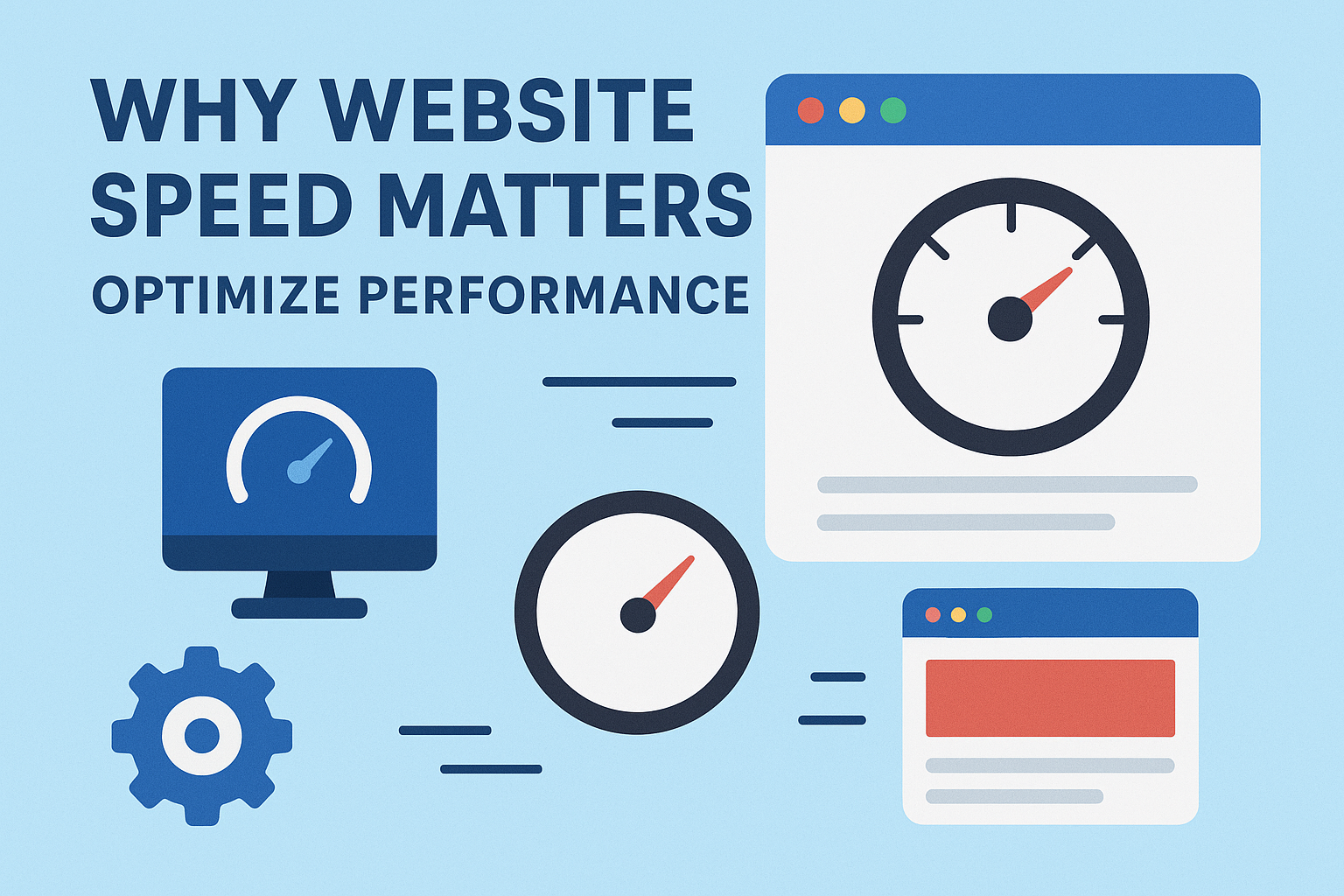Pioneering
Creative
Excellence
Script Orbit

Why Website Speed Matters: Optimize Performance
Meta Description:
Website speed directly impacts user experience, SEO rankings, and conversions. Learn why website performance matters and how to optimize it for success.
Introduction
In the digital age, speed is everything. Whether you’re running an online store, a corporate website, or a personal blog, the performance of your website can make or break your online presence. A slow-loading website not only frustrates visitors but also hurts your search engine rankings and conversion rates.
In this article, we’ll explore why website speed matters, its impact on users and businesses, and actionable steps you can take to optimize performance.
Why Website Speed Matters
1. First Impressions Are Everything
Your website is often the first interaction a customer has with your brand. Studies reveal that 53% of visitors leave if a site takes longer than 3 seconds to load. A slow website instantly signals inefficiency, leading potential customers to leave before they even see your content.
2. Better User Experience
A fast website keeps visitors engaged. When pages load instantly, users are more likely to stay longer, browse multiple sections, and return in the future. A sluggish experience, however, increases bounce rates and reduces trust.
3. SEO & Google Rankings
Website speed is a Google ranking factor. Faster sites are prioritized in search results, while slow ones risk lower visibility. Moreover, faster loading speeds improve crawl efficiency, which helps search engines index more of your pages.
4. Higher Conversions & Sales
Speed has a direct impact on your bottom line. For e-commerce businesses, a 1-second delay can reduce conversions by 7%. Fast websites create seamless buying experiences, making customers more likely to complete purchases or sign up for services.
5. Mobile Optimization Is Critical
With mobile devices driving more than half of global web traffic, website speed on smartphones and tablets is non-negotiable. Mobile-first indexing by Google further emphasizes the need for mobile-friendly, fast-loading websites.
How to Optimize Website Performance
Here are proven techniques to ensure your website runs at lightning speed:
1. Optimize & Compress Images
Large images are one of the main culprits of slow websites. Use modern formats like WebP and compression tools to reduce file size without sacrificing quality.
2. Leverage Browser Caching
Enable caching so that returning visitors don’t need to reload all your site’s resources, saving time and bandwidth.
3. Minify Code (CSS, JavaScript, HTML)
Remove unnecessary characters, spaces, and comments from your code. Clean code ensures faster loading times.
4. Use a Content Delivery Network (CDN)
CDNs distribute your content across global servers, allowing users to load your site from the nearest location. This drastically reduces latency.
5. Reduce HTTP Requests
Every image, script, and file adds a request. Fewer requests = faster websites. Consider combining files and using lightweight designs.
6. Choose a High-Performance Hosting Provider
Even the best-optimized website can suffer if hosted on a slow server. Invest in reliable, scalable hosting for consistent performance.
7. Implement Lazy Loading
Load media (images, videos) only when users scroll to them. This reduces the initial load time of your pages.
Final Thoughts
Your website’s speed is not just a technical detail — it’s a business-critical factor. A fast-loading site delivers better user experiences, improves SEO rankings, and boosts conversions.
Every second counts online. By optimizing your website’s performance, you’re not only making your visitors happy but also setting your business up for long-term success.
"Creativity is intelligence having fun." - Albert Einstein